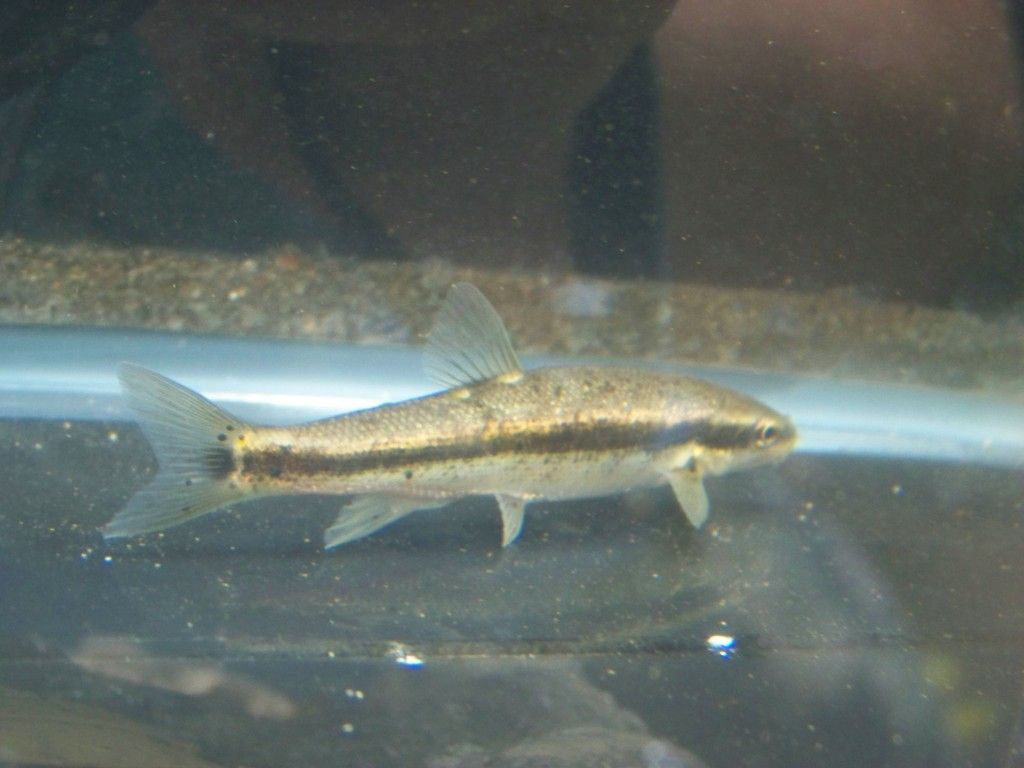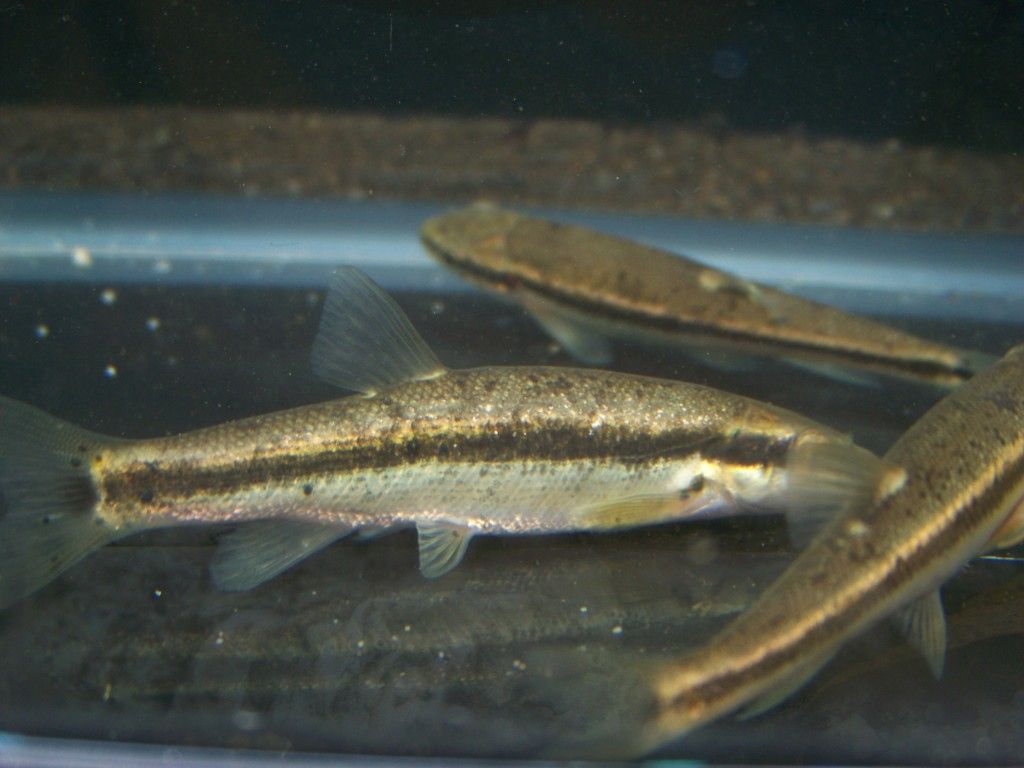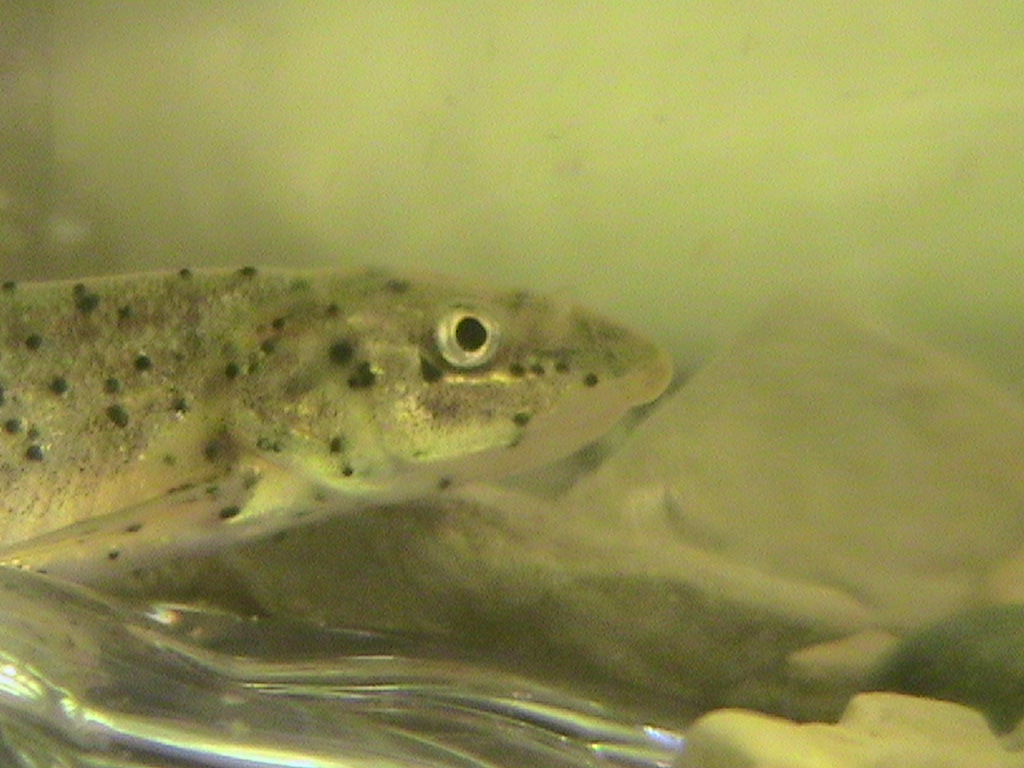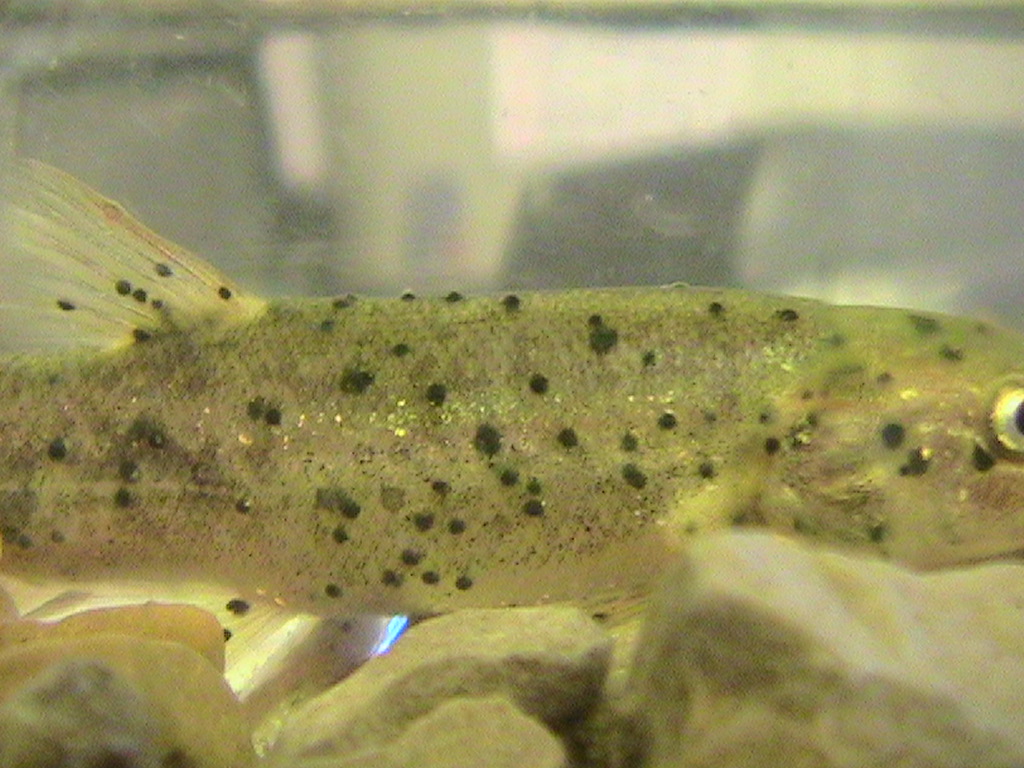Dace
#1
 Guest_will_*
Guest_will_*
Posted 08 August 2012 - 07:40 PM
Thank you.
#5
 Guest_exasperatus2002_*
Guest_exasperatus2002_*
Posted 09 August 2012 - 12:18 AM
Its a worm that hides under the skin waiting for a bird like a king fisher to eat the fish, it matures in the bird, lays eggs, poops the eggs out, snails clean up the mess, eggs hatch in the snail, Fish eats snail & young worms find their way into the minnow. and the cycle repeats.
Edited by exasperatus2002, 09 August 2012 - 12:21 AM.
#9
 Guest_smilingfrog_*
Guest_smilingfrog_*
Posted 09 August 2012 - 05:05 PM
Its a worm that hides under the skin waiting for a bird like a king fisher to eat the fish, it matures in the bird, lays eggs, poops the eggs out, snails clean up the mess, eggs hatch in the snail, Fish eats snail & young worms find their way into the minnow. and the cycle repeats.
Does the fish eat the snail? I thought the parasite just developed to a certain point in the snail, then left and sought out a fish for the next stage of its lifecycle.
#10
 Guest_Skipjack_*
Guest_Skipjack_*
Posted 09 August 2012 - 07:10 PM
#12
 Guest_gerald_*
Guest_gerald_*
Posted 10 August 2012 - 02:49 PM
I've heard that it's easily treatable. First, you must kill off any snails in the tank, as that's a key part of the worm's life cycle. Then, just treat with salt and antiparasitic medicine.
#13
 Guest_will_*
Guest_will_*
Posted 15 August 2012 - 04:24 PM
Reply to this topic
0 user(s) are reading this topic
0 members, 0 guests, 0 anonymous users












